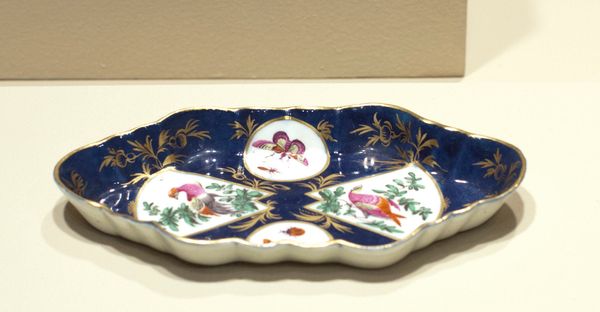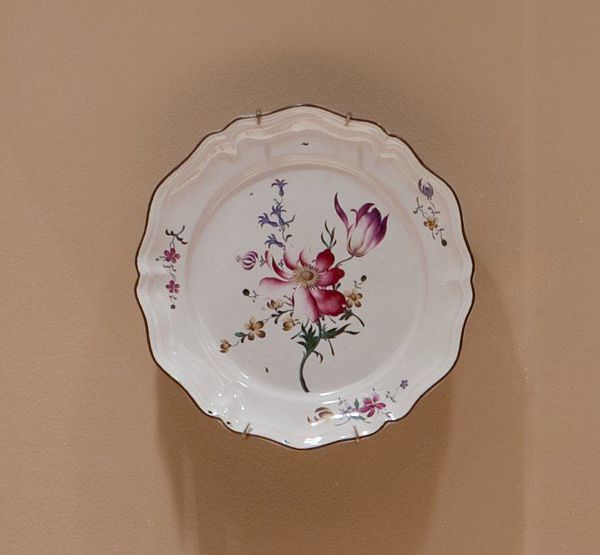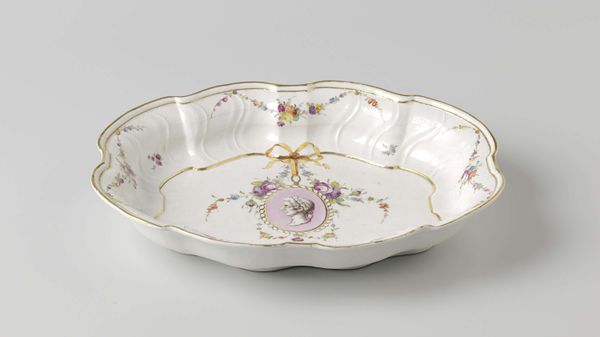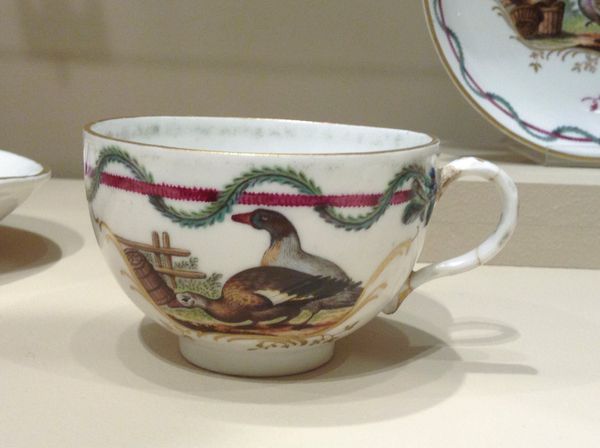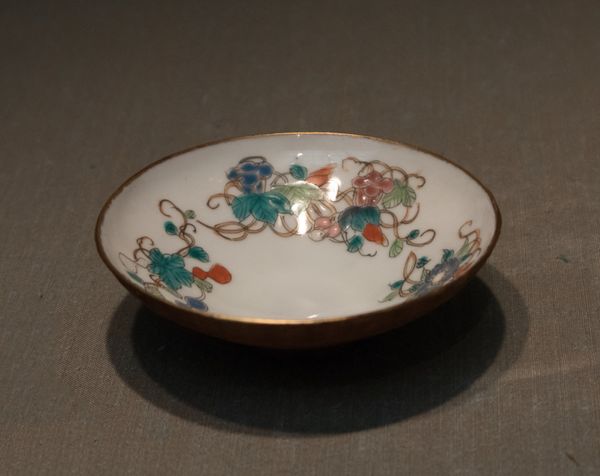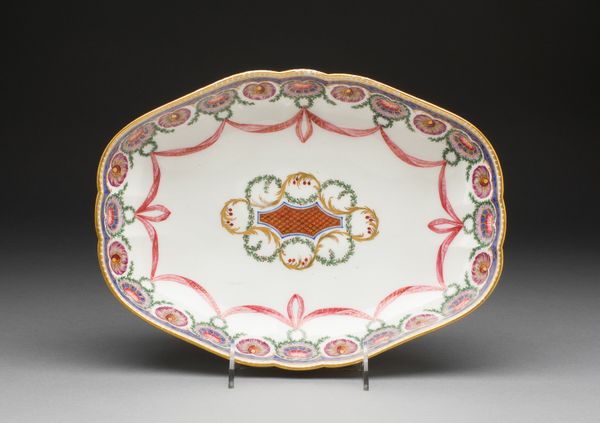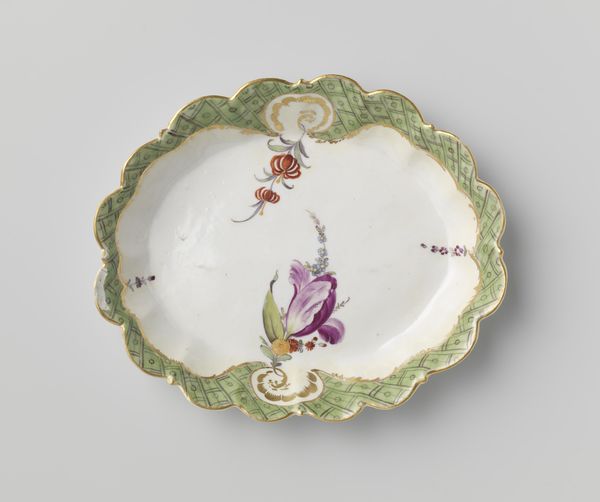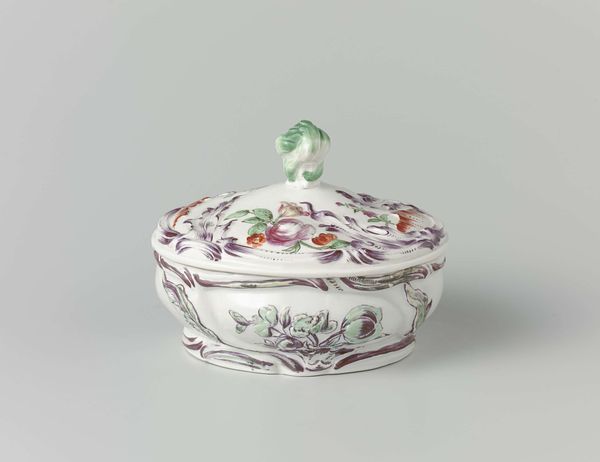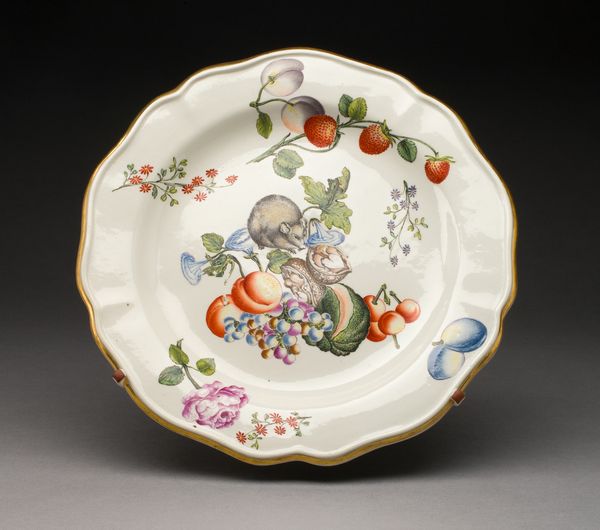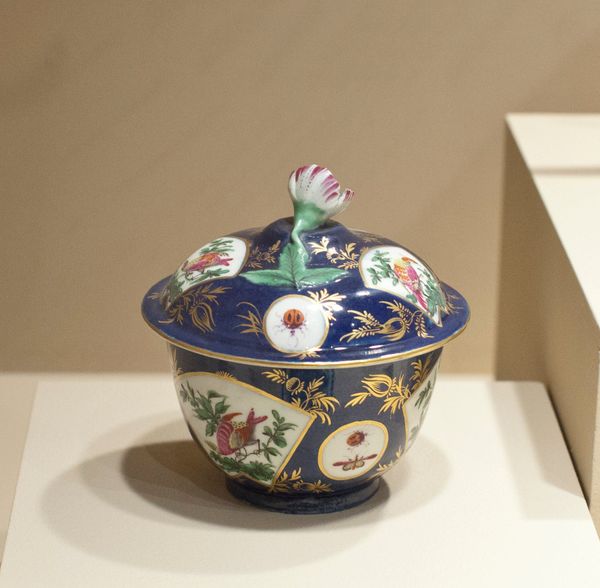
Dimensions: 1 1/4 x 13 1/8 x 10 in. (3.18 x 33.34 x 25.48 cm)
Copyright: Public Domain
Curator: Immediately, the vibrant fowl command my attention. Editor: Well, this piece, a tray from a solitaire set made around 1785, was crafted by the Höchst Porcelain Factory. What details do you notice compositionally? Curator: The composition is rather intriguing; I'm drawn to the sinuous lines framing the tray, and the central avian motif creates a focal point with a dynamic yet balanced feel. The negative space around the central grouping creates a lightness, despite the subject being earthbound birds. Editor: Quite right! Porcelain production, especially in the 18th century, involved intense manual labor, from mixing raw materials to firing the pieces. These trays were produced by workshops, often with specialized roles for each worker. Do you see any signifiers of that in the production values here? Curator: There's a clear commitment to decorative elegance. The use of color, although subdued, brings a level of visual sophistication that transcends pure utility. I find myself contemplating how the design choices here reflect rococo ideals. Editor: Absolutely, and the source of those pigments mattered, both where the base minerals were mined and how those processes interacted with the materials at hand, specifically the kaolin. The solitaire set was certainly made for an elite clientele that could afford this labor-intensive and material-costly creation. Can you envision the social interactions it facilitated? Curator: I imagine idle afternoons, perhaps fueled by gossip and sweetened with exotic teas served on objects like these. The rococo love of playful, pastoral imagery underscores that escapist quality. The artifice is unmistakable. Editor: From a materialist perspective, this porcelain piece prompts us to consider the networks of production and consumption, the hands involved, and the social status encoded within the object itself. Curator: Indeed. A deeper appreciation for the artistry, social context, and formal aspects makes this piece much more than a decorative object. Editor: Understanding its context gives richer meaning to the ceramic’s refined appearance and those whimsical flourishes, certainly.
Comments
No comments
Be the first to comment and join the conversation on the ultimate creative platform.
